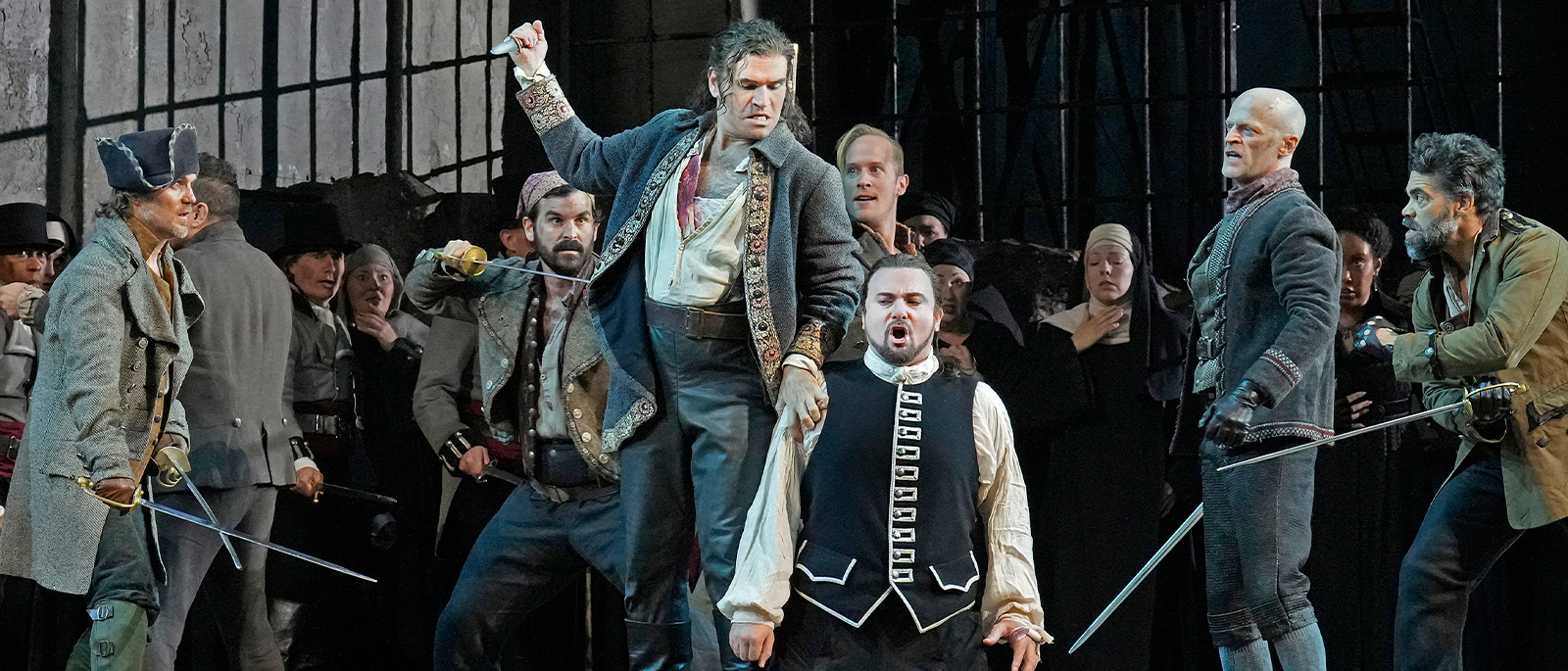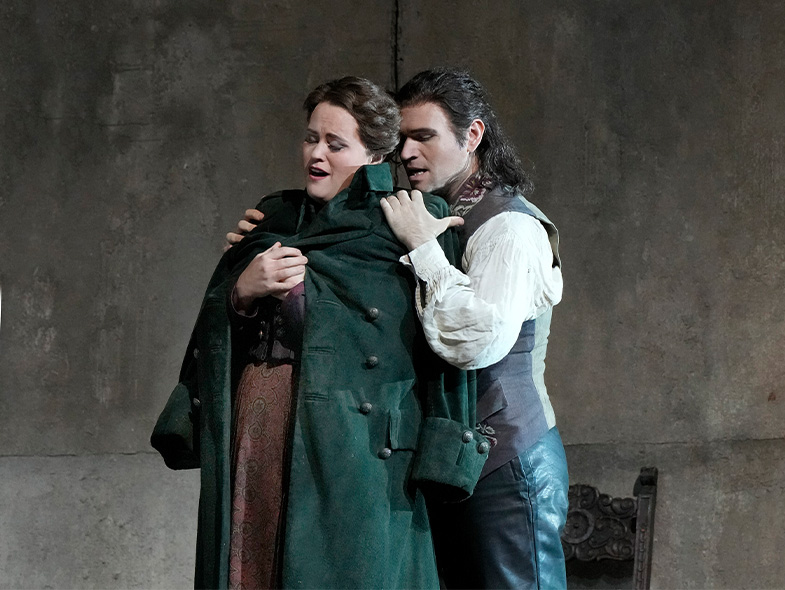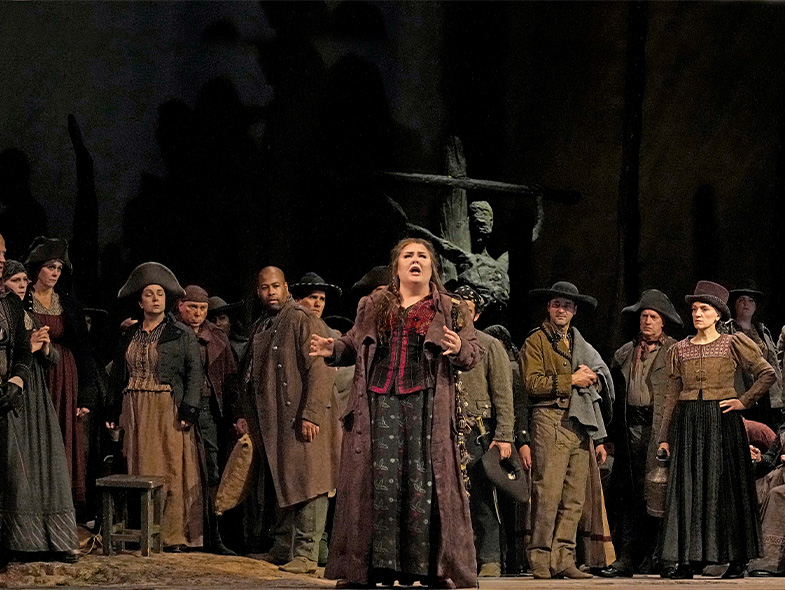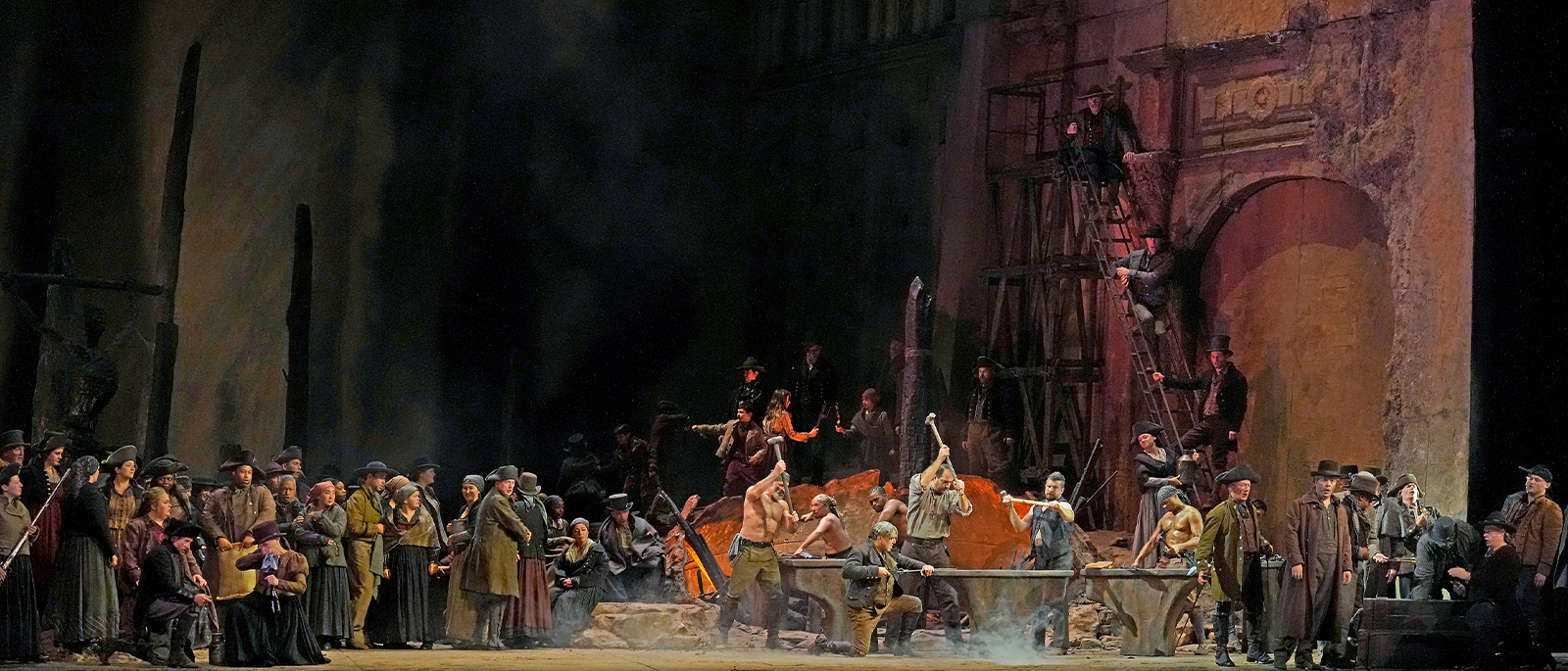
Giuseppe Verdi
Il Trovatore
This production ran: Oct 26 - Dec 6
This production is in the past.
Overview
Verdi’s charged drama of family strife and forbidden love stars tenor Michael Fabiano as Manrico, the bold troubadour unwittingly at war with his own brother, with Gwyn Hughes Jones singing the final two performances. Sopranos Rachel Willis-Sørensen and Angela Meade share the role of the noble Leonora, with mezzo-sopranos Jamie Barton and Olesya Petrova trading off as Manrico’s tormented mother, Azucena. Baritone Igor Golovatenko is the unbending Count di Luna, with bass-baritone Ryan Speedo Green as the soldier Ferrando. Italian conductor Daniele Callegari leads David McVicar’s Goya-inspired staging.
Production a gift of the Annenberg Foundation
Revival a gift of Bank of America and The Joseph and Robert Cornell Memorial Foundation
A co-production of the Metropolitan Opera, Lyric Opera of Chicago, and San Francisco Opera
Languages
Languages sung in Il Trovatore
Sung In
Italian
Titles
Title languages displayed for Il Trovatore
Met Titles In
- English
- German
- Spanish
- Italian
Timeline
Timeline for the show, Il Trovatore
Estimated Run Time
2 hrs 55 mins
-
House Opens
-
Acts I & II
70 mins
-
Intermission
35 mins
-
Acts III & IV
70 mins
-
Opera Ends

World premiere: Teatro Apollo, Rome, 1853. Verdi’s turbulent tragedy of four characters caught in a web of family ties, politics, and love is a mainstay of the operatic repertory. The score is as melodic as it is energetic, with infectious tunes that are not easily forgotten. The vigorous music accompanies a dark and disturbing tale that revels in many of the most extreme expressions of Romanticism, including violent shifts in tone, unlikely coincidences, and characters who are impelled by raw emotion rather than cool logic.
Creators
In a remarkable career spanning six decades in the theater, Giuseppe Verdi (1813–1901) composed 26 operas, at least half of which are at the core of today’s repertoire. Salvadore Cammarano (1801–52) was one of the foremost librettists of his day. He collaborated with Donizetti (Lucia di Lammermoor, among others) and wrote the text for La Battaglia di Legnano and Luisa Miller for Verdi. After his death, the Trovatore libretto was completed by fellow writer Leone Emanuele Bardare (1820–after 1874).
PRODUCTION
David McVicar
SET DESIGNER
Charles Edwards
COSTUME DESIGNER
Brigitte Reiffenstuel
LIGHTING DESIGNER
Jennifer Tipton
CHOREOGRAPHER
Leah Hausman

Composer
Giuseppe Verdi
Setting

The opera is originally set in northern Spain in the early 15th century, during a time of prolonged civil war. Audiences of the Romantic era understood civil war as a sort of societal schizophrenia, in which individuals could be easily torn apart, both physically and psychologically, by shifting fortunes and conflicted loyalties. The Met’s production places the action during the Peninsular War (1808–14), when Spain and its allies were fighting the forces of Napoleon.
Videos
Music
Verdi’s score for Il Trovatore perfectly expresses the extreme nature of the drama at hand. Throughout the opera, the use of melody is as uninhibited as the emotions of the protagonists. But that melody often appears to be as disturbed as the situations it portrays: Much of the score is written in uneven meters (such as 3/4 or 6/8), and even those segments that are set in common 4/4 time have vigorous counter-rhythms fighting against any sense of symmetry. Beyond the rhythmic irregularities, another feature of the score is the heavy use of minor keys in almost all of the main arias.
